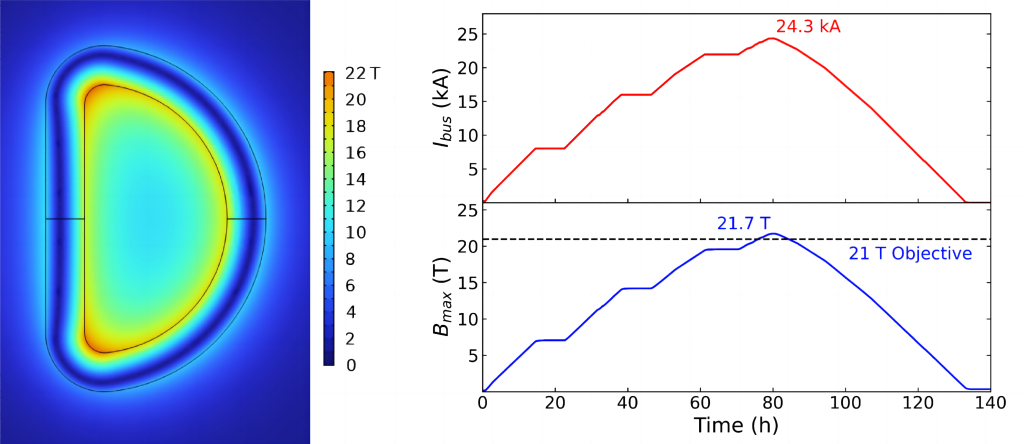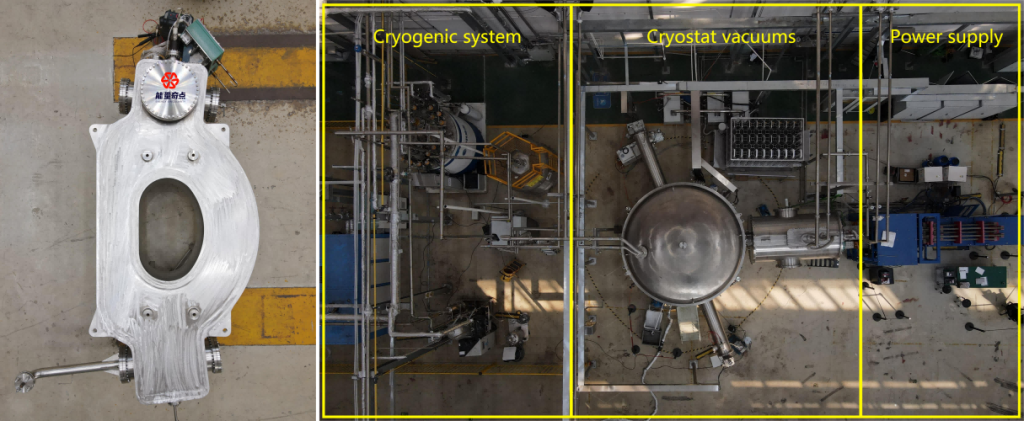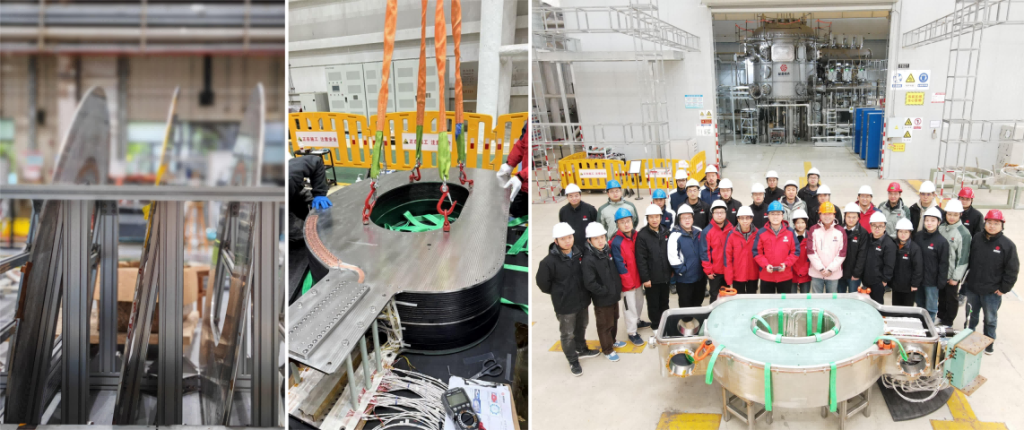Energy Singularity has achieved a monumental breakthrough in high-temperature superconducting (HTS) magnet development. The company’s state-of-the-art large-bore high-field Jingtian magnet has successfully completed its first experiment, generating an unprecedented 21.7 tesla magnetic field. It has surpassed the previous record of 20.1 tesla set by the SPARC TFMC magnet developed by MIT and CFS in 2021. This test set a new record for large-bore D-shaped HTS magnets, marking a significant leap forward in fusion energy commercialization.

The Jingtian magnet is a D-shaped HTS magnet, with a linear size of approximately 3 meters by 1.4 meters, and a total weight of about 7.5 tons. Its innovative design features a winding pack meticulously assembled from 32 stacked single-pan coils, with a center bore of 0.5 square meters. In this test, a electrical current of 24,300 amperes (per turn) passed through the winding pack via ReBCO current leads, to produce a peak field of 21.7 tesla. The total ampere-turns of the magnet reached 9.26 megaamperes-turns, with a current density of 157 megaamperes per square meter in the winding pack.
The primary mission of Jingtian magnet is to research, develop, and validate the critical technologies and manufacturing techniques essential for the toroidal field (TF) magnets of our next-generation HH170 HTS tokamak, a 10 times energy gain fusion device. This test remarkably demonstrated over 21 tesla in a large-bore D-shaped magnet with over 50% of the linear size of the HH170 TF magnet, and over 950 MPa structural loading successfully handled as designed. This achievement not only signifies the successful completion of the mission, but also represents a pivotal advancement for the HH170 project and a critical breakthrough in HTS magnet technology for commercial fusion.

The performance of a tokamak largely depends on the strength of the confining magnetic field. Based on the widely accepted IPB98(y,2) scaling law in the fusion community, it is estimated that the triple-product, which determines the fusion energy gain factor, is proportional to the 2.5th power of the plasma major radius and the 3.5th power of the magnetic field. While conventional tokamaks rely on device scale to attempt net energy, HTS magnets enable a high-field approach. Doubling the magnetic field means that the device’s linear dimensions can be reduced to 1/3 while maintaining the same energy gain factor, with the volume shrinking to 1/30. This significantly reduces the cost and time needed to construct a net energy fusion device, and therefore accelerates the commercialization of fusion energy. Mastering the design and manufacturing technologies for large-bore (meter-scale) high-field (20+ tesla) HTS magnets is vital for the development of economically competitive and commercially viable high-performance fusion devices.
Since its establishment in 2021, with the mission to accelerate the realization of limitless clean energy, Energy Singularity has continuously achieved breakthroughs in the field of HTS tokamak. In June 2024, we successfully achieved the first plasma in HH70, the world’s first all-HTS tokamak. The Jingtian magnet represents the company’s second milestone following the HH70. It has surpassed the previous state-of-the-art large-bore D-shaped HTS magnet in peak field and current density, positioning Energy Singularity at the forefront of advanced HTS magnet technology and commercial fusion energy development.

Fusion energy is hailed as the holy grail of energy. The commercialization of fusion demands not only substantial reductions in reactor construction costs, but more critically, access to abundant and economically viable fuel sources. Among the potential fuels for fusion energy, deuterium is uniquely suited to meet these criteria, whereas tritium and helium-3 are extremely scarce on Earth. The technical challenges and high costs (lithium-6) involved in tritium-breeding pose significant obstacles to achieve cost-effective fusion power generation. In contrast, deuterium-deuterium (D-D) fusion represents a virtually limitless source of clean energy. However, the triple-product required for D-D power plants is estimated to be 20 times greater than that for deuterium-tritium (D-T) reactors, which will impose more stringent demands on the confining magnetic field. The success of Jingtian magnet has laid the groundwork for further development of the high-field magnets required for future D-D fusion reactors.